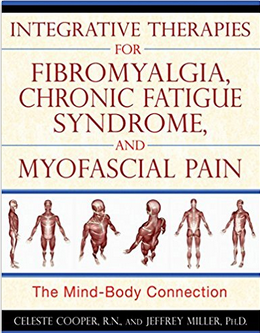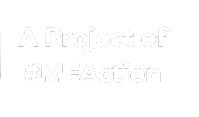Integrative Therapies for Fibromyalgia, Chronic Fatigue Syndrome, and Myofascial Pain: The Mind-Body Connection
Integrative Therapies for Fibromyalgia, Chronic Fatigue Syndrome, and Myofascial Pain: The Mind-Body Connection is a book by Celeste Cooper, RN, who worked as a nurse and nurse educator for 20 years before being diagnosed with fibromyalgia, chronic myofascial pain and chronic fatigue syndrome and Jeffrey Miller, PhD, is a psychologist specializing in chronic illness from a spiritual perspective.
 | |
| Author | Celeste Cooper R.N. and Jeffrey Miller Ph.D. |
|---|---|
| Country | USA |
| Language | English |
| Subject | Chronic Fatigue Syndrome, Fibromyalgia, & Pain Management |
| Genre | Health, Fitness, and Dieting |
| Publisher | Healing Arts Press |
Publication date | 2010 |
| Media type | paperback |
| Pages | 448 |
| ISBN | 978-1594773235 |
Publisher's synopsis[edit | edit source]
(This synopsis was provided by the publisher for promotional purposes. For book reviews, please see Links section below.)
Fibromyalgia, chronic myofascial pain from muscle trigger points, and chronic fatigue syndrome are often seen as interchangeable conditions. Nothing could be further from the truth--however, they do often coexist. Knowing if more than one of these disorders is present is extremely important, because the treatment for one of them can often exacerbate the problems caused by the others. Written by a registered nurse and a psychologist who has been treating these conditions since 1994, this book presents an integrative medical approach to these three disorders with a strong emphasis on utilizing and strengthening the mind-body connection to restore well-being.
The authors begin with clear diagnostic guidelines for each condition and reference the latest scientific research on what causes these illnesses. Because many medical practitioners are relatively unfamiliar with these disorders, it can take several medical visits to arrive at a definitive diagnosis. Clear communication with medical personnel is key to diagnostic success. This book provides invaluable advice on how to describe symptoms, document health history, and keep a log of medical appointments. Included are interactive worksheets to facilitate these activities. The authors provide a thorough guide to numerous treatment options - from diet, exercise, and herbs to mindfulness meditation, yoga, and nonsteroidal anti-inflammatory drugs (NSAIDs). They also offer techniques to dispel the "brain fog" that these illnesses can create, offer guidance on the psychological issues that accompany these chronic pain disorders, and provide advice on how to build a personal support team. The final chapter gives advice on how to navigate the health care system, including step-by-step instructions for preparing an application to the Social Security Administration for disability benefits. An extensive resource section provides a wealth of contact information for helpful agencies and organizations, good sources for medical supplies, and a wide selection of suggested further reading. In short, this integrative treatment guide will open the door not only to physical recovery but also to emotional, mental, and spiritual well-being.

